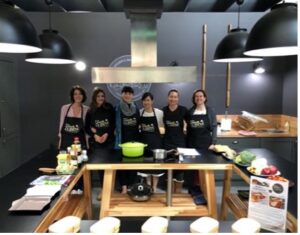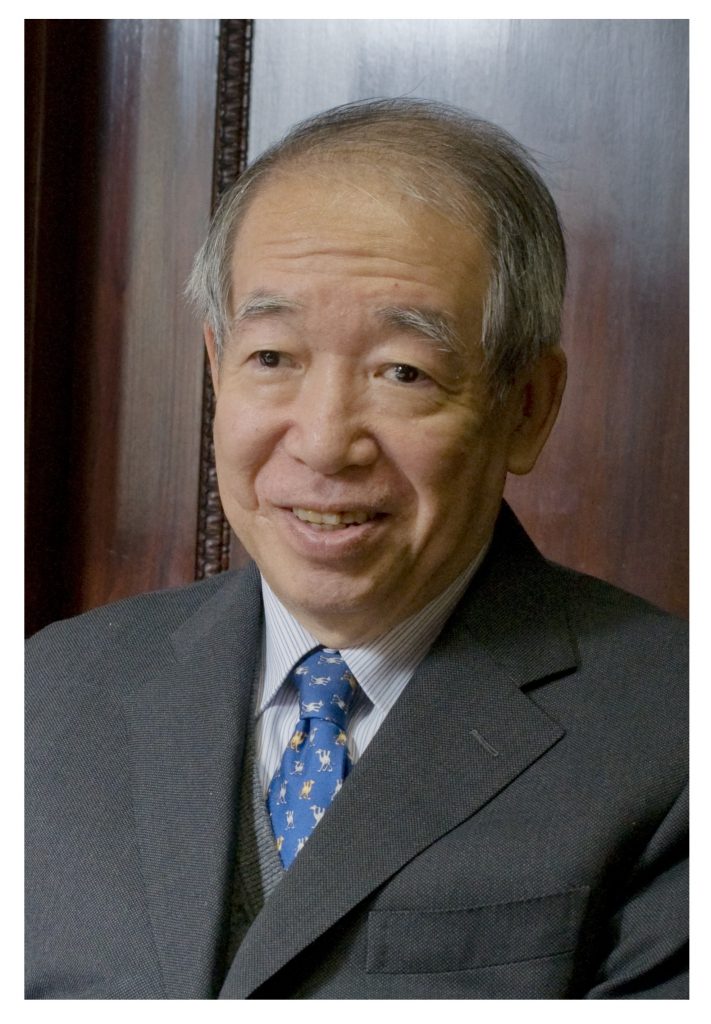Ekiben is an essential item to be enjoyed along with the scenery when travelling in Japan. Bento, a lunch box made up of a combination of rice and a variety of side dishes, all packed in a portable container, is such an integral part of Japanese life.
This presentation will focus on “Ekiben” (EKI = station, BEN = Bento).
Ekiben is a Bento box sold at stations or on board of long-distance trains. For around 130 years, Ekiben has been a part of people’s travel memories, filled with local ingredients and dishes at stations throughout Japan.

How Ekiben started
Various theories exist; however, it is said to have originated at Utsunomiya Station in Tochigi Prefecture on the 16th of July 1885.
When Utsunomiya Station on the Tohoku Line was opened by Nippon Railway, “Shirakiya”, a hotel located in front of the station, started selling portable meals.
At first it was as simple as two sesame-coated rice balls and a “Takuwan” (a Japanese pickle made from marinated radish) wrapped in bamboo sheath.
Along with the development of transports, the railway lines became longer. Where the train made longer stops, Ekiben were sold by vendors walking along the platform at those stations.
In the early days, Ekiben were mainly sold to the military, often called Gun Ben “military bento,” because of the high demand by troops travelling to military camps on tours of duty at large stations in Japan.
There were several Ekiben stores by Utsunomiya Station where a big military base existed. «Ekiben Menu Innovations »
Ekiben started in 1885 as a meal which was to savor when cold and easy to hold in one hand, but by 1890 it had developed into the boxed styled Bento we know today.
1890’s Ekiben had salted grilled sea bream, Datemaki, grilled Kamaboko (steamed fish paste), Dashi Maki (rolled eggs), pickled soybeans in Kombu, chestnut Kintoki, boiled burdock root, sweetened lily root, Nara pickles, pickled plum, rice sprinkled with black sesame, etc.
In order to preserve the food for a long time, they chose dishes that were slower to decompose, and were still tasty even when cold and did not have a strong smell because they were to be eaten on the train.
For this reason, they used a lot of preservative seasonings such as sugar and vinegar and many of them were seasoned with sweet stews that went well with rice.
The Evolution of Ekiben
In 1987, the first “heating type” container Ekiben, “A cchi cchi Steam Bento,” was launched.
The heating bento worked in a way in which in its container held water and a bag of granulated ‘quicklime’ that, when the string was pulled, a chemical reaction took place and heated up the Bento.
Moreover, like other Ekiben, the container itself is rapidly cooled down after its production to prevent bacteria growth.
Ekiben in France
Ekiben is also attracting a lot of attention in France, where I currently live.
In February 2015, a French woman who had lived in Japan opened an Ekiben shop called “Koedo e Douzo” in the Issy Val de Seine station in the suburbs of Paris.
She wanted to bring back the taste of Japanese mother’s food that her host family used to make while she was studying in Japan, so she decided to sell purely Japanese style Bento. This Bento became popular among businessmen working in the companies nearby and its unusual Japanese culture of Ekiben, with healthy Japanese food, had attracted many fans.
In March/May 2016, in Paris-Gare de Lyon Station, for a limited period of two months, JR East Japan and Nippon Restaurant Enterprise set up an Ekiben shop. The five Ekiben companies worked together to sell their Bentos, sold within seven varieties, which were so popular that 200 meals a day were sold out as soon as the shop opened.
Later in 2018, an Ekiben company, of over 120 years, famous for its chicken rice Bento boxes at JR Ootate Station in Akita Prefecture, opened a shop called Ekiben Torimeshi Bento in Paris-Gare de Lyon Station.
Their Ekiben is popular for its unique flavors, such as using Japanese Akita rice with French basil chicken etc. Japanese food has been registered as a UNESCO Intangible Cultural Heritage Site and has attracted even more attention. Japanese food is very popular around the world and especially those in the countries that I have lived in; the USA, Singapore and France, all seem to have a widespread Japanese culture and culinary appreciation.
As a Japanese, I am proud that Japanese food is loved all over the world and is also attracting attention in terms of health.
The Ekiben is a portable meal made with local special products from each region, based on the background of the region and its history. When you travel to Japan, please try an Ekiben. Each region having its own unique look and taste. As you savor the Ekiben, you can also feel the ingredients nurtured in the local climate and the thoughts of the makers, leaving these traces of feelings on the pages of your travel memories.
As a Japanese cooking teacher, I would like to teach people how to prepare nutritious and safe Bentos so that they can enjoy portable food like Ekiben as a travel companion in the future.

Table: Brief History of Ekiben
1885 Shirakiya started selling Ekiben at Utsunomiya station.
1886 Hattori Shoten vendors began selling on platform at Nagoya station when opened on 1 May.
1890 Japan’s first Makunouchi Ekiben sold at Himeji Station.
1890 Suiryoken started selling at Osaka station.
1906 Ekiben started in Kyoto 1939-1945 World War II (After the war, the demand for military Bento ceased).
1958 Ogino-ya started selling “Toge no Kamameshi” at Yokogawa station when the Shinetsu Line opened (this Bento is still on sale).
1964 ShinkansenTokaido Line opened and Ekiben spread across the country.
1966 “The 1st Ekiben Festival” was held at Shinjuku Department Store. About 30 kinds of Bento were sold.
1987″ShinkansenGourmet” Ekibenstarted at everystation of ShinkansenTokaidoLine.
1988 “Achi-chi Sukiyaki Bento” was launched.
1989 “The 24th Ekiben Festival” was held at Shinjuku Department Store. About 100 kinds of Bento were sold.
2020 “The 55th Original Ekiben and All-Japan Good Food Festival”, with 300 Ekiben sold, generated over 600 million yen (£4million).
Mayumi DANZAKI
Head of Dans La Cuisine hospitality cooking class.
Mayumi worked at Gastronomic French restaurant <Chez Matsuo> for 5 years before opening her own cooking school.
While running her own school, she also holds cooking classes at Seibu Community College and other studios.
Mayumi was also involved as a chef for an afternoon tea party at an embassy hosted by Aston Martin Japan and party food for a major construction company.
She has excelled in the culinary world for more than 20 years, having moved to the U.S., Singapore, and now Bordeaux, France, where she offers cooking classes tailored to the needs of each market.
Instagram: mayumi_bdx
Homepage: https://www.danslacuisine-mami.com
<references>
-
-
- https://kome-academy.com/bento_library/column/column02.html
- https://www.wikiwand.com/ja/%E9%A7%85%E5%BC%81#/%E3%83%A8%E3%83%BC%E3%83%AD%E3%83%83%E3%83%91
- https://www.awajiya.co.jp/bento/
- https://www.oginoya.co.jp/tougenokamameshi/sdgs/
- https://ichimonjiya.jp/universal_box
- https://www.ekiben-aratake.com/item/motarou/
- https://parishanazen.fr/index_jp.html
-













